What is Roof Flashing? (What You Need to Know About It)
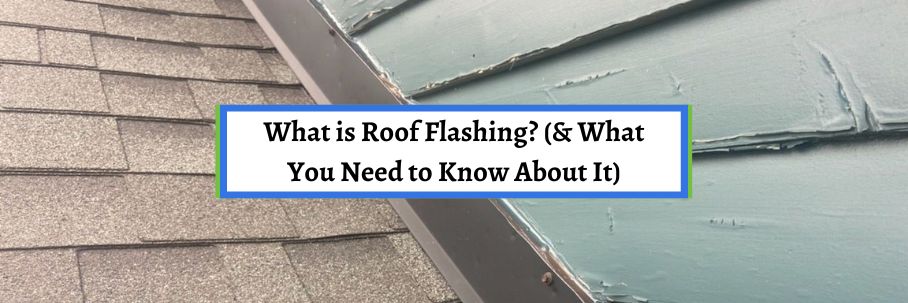
Your roof is a combination of different parts coming together to protect your home from leaks. While every piece is important, your roof’s flashing is crucial to stop these leaks.
Now, you may think learning about an individual component isn’t necessarily important. But did you know that this is an important piece of the puzzle to understanding the price of a roof investment and much more?
For over 30 years, the team at Bill Ragan Roofing has taken pride in helping homeowners understand all aspects of their upcoming roof replacement. That’s why I want to help you get started by breaking down what you need to know about roof flashing.
This article covers the following:
- What roof flashing is, plus the common types
- Your metal options for roof flashing
- If roof flashing gets replaced when getting a new roof
- Maintaining your roof flashing
What is roof flashing?
Roof flashing is a thin metal material installed to direct water away from areas where your shingles butt up against something (walls, chimneys, valleys, etc.). It’s one of the most crucial roofing components that every roof must have to avoid leaks in problem areas.
There are four common types of roof flashing: apron flashing, step flashing, counter flashing, and valley flashing.
Apron flashing
Apron flashing is used at the base of a wall or penetration. It’s shaped like an L and can be up to 14 feet long to fit the penetration’s base.
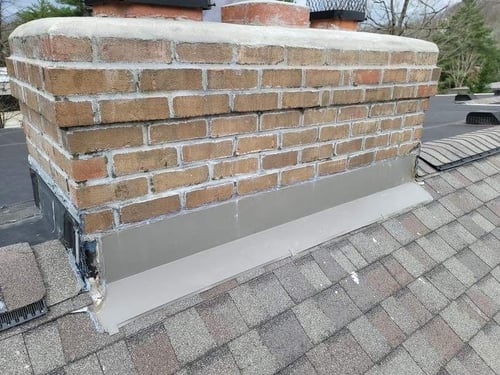
It’s also used around dormers to prevent water from getting into your windows.
Step flashing
Step flashing is primarily used against the sides of walls and chimneys. It works by placing a piece of metal (flashing) under every shingle installed right up against the side of a wall to block the water from running down into it.
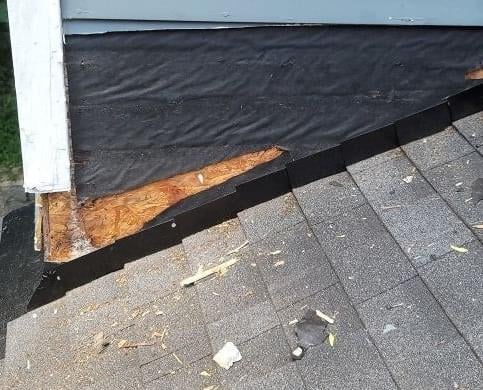
That’s why the term “step” is used in step flashing. You do it step by step by installing a shingle, then a piece of flashing, then another shingle, then a piece of flashing until the wall is completely protected.
Counter flashing
Counter flashing is used on walls and chimneys like step flashing. Unlike step flashing, the piece of flashing is sawed into an existing mortar joint, and the metal comes over the top of the brick.
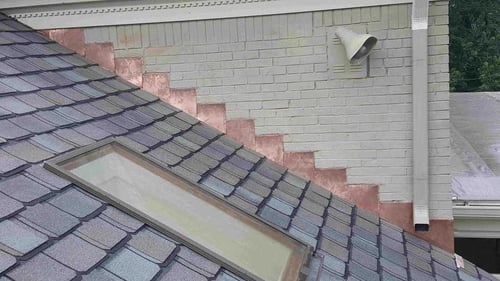
Like step flashing, counter flashing is sometimes installed in a step-by-step method. But if it’s flashing you can actually see, it’s counter flashing.
Roof valley flashing
Roof valleys are one of the most common roof areas prone to leaks because of the amount of water that flows through them. Because of this, they need the right type of material installed in them to prevent leaks.
.png?width=500&height=281&name=BlogPictures%20(2).png) (Left to right: valley flashing on luxury shingles, cedar shake, and synthetic shingles)
(Left to right: valley flashing on luxury shingles, cedar shake, and synthetic shingles)
For open roof valleys specifically, they need metal valley flashing installed in it. Just know that this type of roof flashing is only installed in valleys of certain roofing materials that can’t bend to “close” a valley.
If you’re getting an architectural asphalt shingle, you won’t have to worry about this type of roof flashing. But if you want certain luxury asphalt shingles (like Grand Manor or Carriage House), synthetic shingles, or cedar shakes, you’ll have roof flashing in the open valleys.
3 more things you need to know about roof flashing
Now you know what roof flashing is and four common types of roof flashing. But there are a few more things to know about this crucial roofing component.
Let’s learn your metal options, if it gets replaced during a roof replacement, and if it requires maintenance.
1. What metal options do you have for roof flashing?
You’ll have multiple metal options to choose from for your roof flashing when getting a new roof. The most common metals homeowners choose are aluminum, steel, or copper.
It’s completely up to you which metal you choose, but you need to consider your budget and the look you want. Steel is the most common type of metal used for roof flashing because of its clean look, and it fits most budgets.
.jpg?width=500&height=281&name=Synthetic%20(1).jpg) (Synthetic shingle roof with all copper roof flashing)
(Synthetic shingle roof with all copper roof flashing)
If you want an upgraded look, copper roof flashing is a great option, but it costs more upfront. Aluminum is the cheapest of the options, but it’s also the least durable.
The best way to make this decision is by talking to your local roofing contractor about which metal gives you the look you want while staying within your budget.
2. Do you have to replace your roof flashing when you replace your roof?
When getting a new roof, you’ll replace all of your old roofing components and materials. I always recommend replacing your roof flashing during a roof replacement.
This is simply so you won’t have to worry about leaks when the older metal starts to have problems. You’ll end up paying for new roof flashing down the road anyway, so you may as well get it done when replacing the rest of your roofing components and materials.
Now, there might be a VERY RARE situation where you might not have to replace your roof flashing. During your roofing contractor’s inspection, they’ll check your roof flashing for rusting and if the integrity of the metal is still strong.
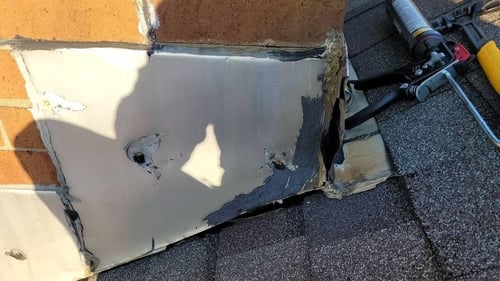 (Roof flashing that should've been replaced during roof replacement)
(Roof flashing that should've been replaced during roof replacement)
If your contractor doesn’t see rusting and the metal’s integrity is still holding up, then your roof flashing might not need to be replaced during your replacement. If it’s damaged, rusted, or if you’re upgrading from a 3-tab to an architectural asphalt shingle, there’s no question it will need to be replaced.
But as I said, I always recommend replacing your roof flashing when getting a new roof.
3. Does your roof flashing need to be maintained as part of roof maintenance?
Just like your car needs an oil change, your roof needs maintenance to keep it running efficiently. Roof maintenance is the best opportunity to check all the vulnerable roof areas susceptible to problems.
Because it’s installed in problem areas, it’s crucial that your roof flashing is inspected as part of annual roof maintenance. This allows your roofing contractor to ensure the flashing is doing its job and the metal’s integrity is holding strong.
This saves you from costly roof repairs and helps catch future roof flashing problems before they start. Failure to maintain your roof flashing can cause all kinds of damage to the interior of your home.
So, not only will you have to pay to fix the roof flashing leak, but you’ll also have to take care of all the damage it caused to your ceiling, drywall, etc. To avoid this and to maximize your roof investment, I recommend a yearly maintenance inspection.
What are the rest of the materials that make up your roof?
Now you know three more things every homeowner needs to know about roof flashing. Remember, roof flashing is a crucial component, and I always recommend replacing it when getting a new roof.
But your roof flashing is not the only thing that gets replaced. In fact, there’s much more to a roof system than what you can see from the street.
That’s why you need to know all the components and materials that get replaced during a roof replacement. After all, don’t you want to know what you’ll be paying for?
Check out the 9 Materials Included in Your Roof Replacement to learn the rest of the components and materials that need replacing when getting a new roof.


